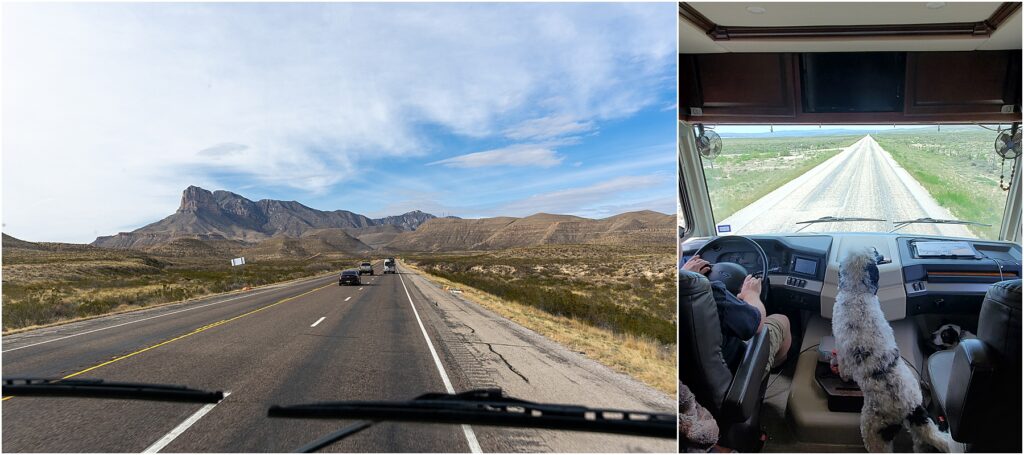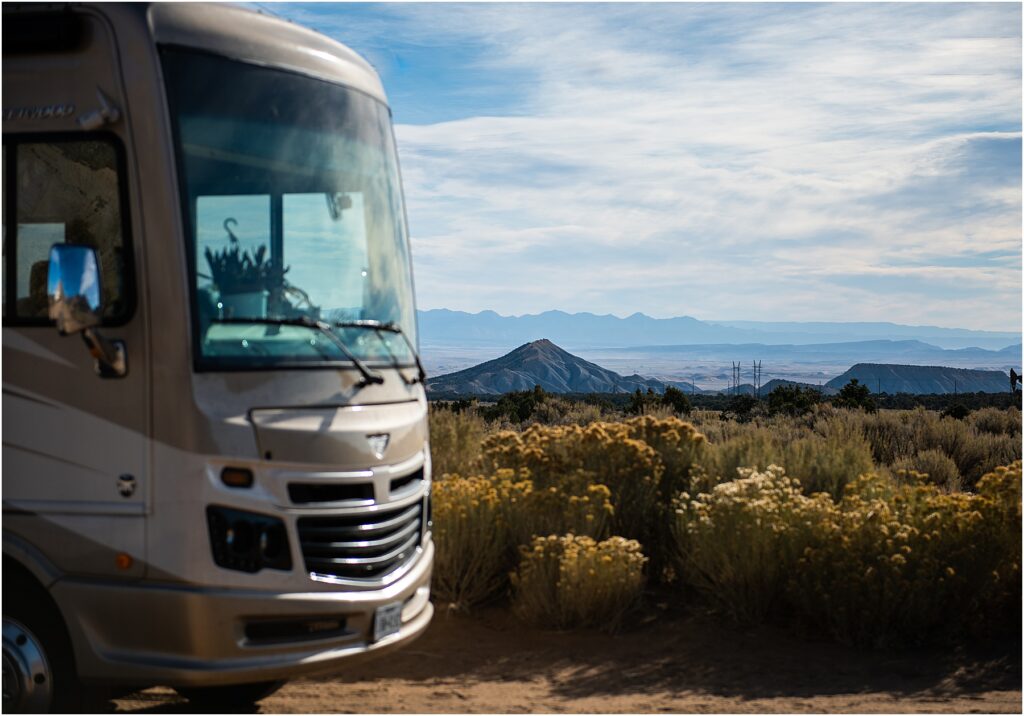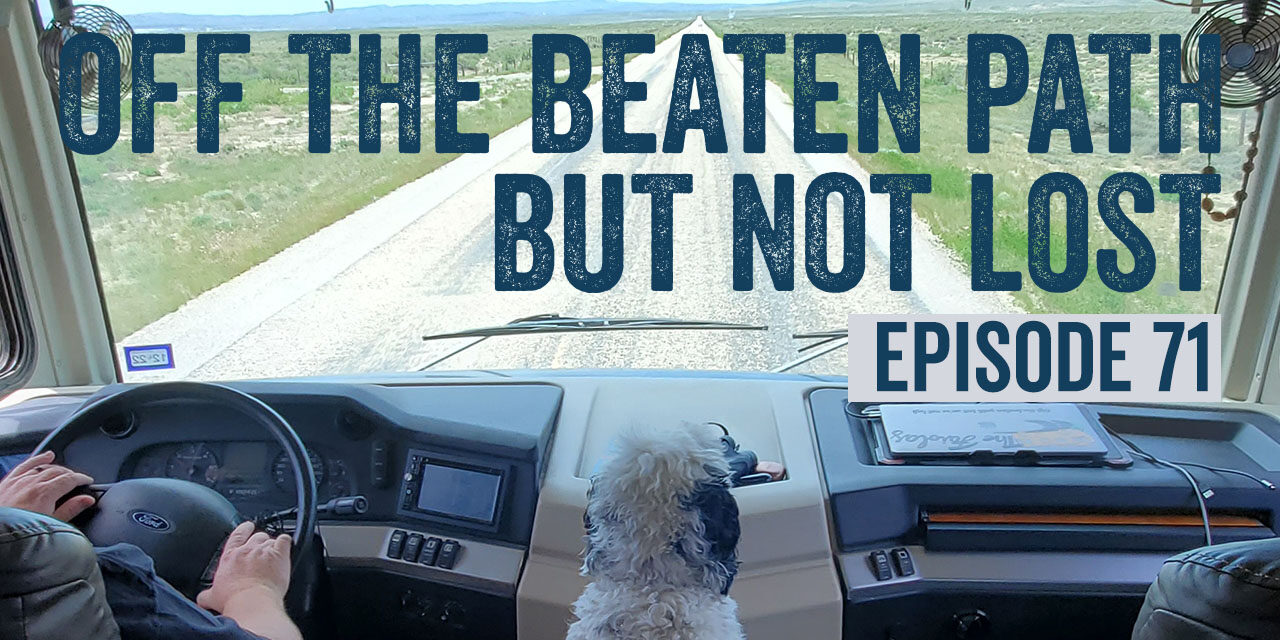Setting out on a journey with a Class A RV presents an unparalleled opportunity to discover new destinations and forge lasting memories with family and friends. However, maneuvering a sizable motorhome can be daunting for beginners. This episode will provide essential driving tips for RV beginners to help owners confidently navigate the road. From understanding the vehicle’s dimensions to mastering the art of parking, these practical insights will empower you to make the most of your motorhome experience, ensuring a safe and enjoyable voyage for you and your family.
Looking for something specific? 👇
Listen to the podcast
Hey adventurers! 🚐
Did this episode spark some wanderlust, or did it remind you of one of your own off-the-beaten-path stories? If you felt that campfire friendship while listening, we would be super grateful if you’d take a moment to pop over to Apple Podcasts. Please leave us a rating, maybe say hi in the review section, and don’t forget to subscribe. It’s like giving a friendly nod to a fellow RVer on the open road.
Do you have a hidden gem of a location you think we should explore next? Or maybe a practical tip for full-time RV living? Leave us a message—this journey is all the richer when shared with the community.
🏞️ Safe travels, and see you down the road!
SUBSCRIBE: APPLE PODCASTS | PODBEAN | SPOTIFY | IHEART RADIO | PANDORA | TUNEIN | Plus, almost all podcasting apps. Let us know if you can't find us on your app.
Tips before getting started
Adapting to the unique aspects of driving a Class A RV can be a significant adjustment for many new owners.
First and foremost, take your time and don’t let anyone rush you, as operating an RV requires patience and concentration.
Remember that RV miles differ from car miles, and journeys may take longer than expected. To help you navigate, invest in an RV-specific GPS that caters to your motorhome’s specific dimensions and limitations. Taking more breaks during your journey allows you and your passengers to stretch and recharge. Establish a preferred travel distance daily to avoid fatigue and ensure a more enjoyable trip.
Following a checklist can be incredibly helpful in keeping you organized and focused on essential tasks.
Finally, depending on your location and the size of your RV, you may need a special license to operate it legally. Check local regulations and acquire the necessary documentation before hitting the road.
What you need to know before ever driving a Class A RV for the first time
When driving a Class A RV, you must know your vehicle’s dimensions and weight to ensure safe and hassle-free travel. In the episode, we delve into various aspects of RV size and weight and their implications for navigation and maneuverability.
Understanding your mirrors and blind spots is crucial for safe driving. Class A RVs typically have two sets of mirrors: flat mirrors that provide a view directly behind the vehicle and convex mirrors that offer a broader angle to help you spot vehicles and objects in your blind spots. Regularly check both mirrors to maintain situational awareness, and adjust them properly before hitting the road.
Lastly, be aware of your RV’s blind spots and areas around the vehicle that cannot be seen using your mirrors alone. These areas can be larger than a typical car, so exercise caution when changing lanes or turning, and always double-check for other vehicles or obstacles before making a move.
On the podcast, we talk about other essential tips you should do when preparing your RV for driving.
What you should do before you drive your RV
Before embarking on your journey, it’s crucial to thoroughly prepare your Class A RV for driving to ensure a safe and enjoyable experience. In the podcast episode, we go into more details, but here are a few tips you should ensure before you put the RV in drive.
Start by inspecting your tires for proper inflation and any signs of wear or damage. Confirm that all exterior and interior lights, including those on your tow vehicle (also known as a “toad”), function correctly.
Check that the leveling jacks are fully retracted, and verify that there are no obstructions around or underneath your RV. If your RV is connected to any external utilities, such as electricity, water, or sewer, disconnect them before departing.
Examine fluid levels, including engine oil, transmission fluid, and coolant, to ensure optimal performance. Ensure your propane system is securely closed and functioning correctly, as leaks can be hazardous.
Inspect all doors, hatches, awnings, windows, vents, and retractable stairs to confirm they are closed and securely fastened. Double-check the pins and connection points on your tow vehicle or trailer to ensure a safe and stable connection.
Moving on to the interior of your RV, take the necessary steps to secure heavy objects for travel, preventing potential damage or accidents during transit. Ensure that all cabinet doors and drawers are closed tightly; using child safety latches can provide an extra layer of security. Check the fridge and freezer to confirm they are closed and locked to prevent spills or accidents.

Driving Tips for RV Beginners
It requires heightened awareness and caution when driving a Class A RV. Here are a few tips we discuss on the episode of the podcast:
The stopping distance will be considerably longer than that of a regular car—keep a safe distance. Plan your route carefully, considering factors such as bridges, mountains, and the location of gas stations.
Always check the weather—wind, rain, fog, or sandstorms can impact the drive. In windy conditions, slow down and keep both hands on the wheel to maintain control. Be mindful of semi-trucks, overpasses, and bridges, as these can create additional challenges due to wind turbulence or height restrictions.
Take more breaks during your travels, as driving an RV can be mentally and physically demanding. Stick to the right lane when possible to enable safer and easier navigation. Remember that braking in an RV requires more time and distance, so be prepared to brake early and gradually.
Stay alert and watch out for distractions, such as wildlife or pedestrians. Always look far ahead on the road to anticipate potential hazards. When parking, be mindful of the length of your rig and its pivot point, as these factors will affect the space required for maneuvering. Familiarize yourself with tail swing, off-tracking, and mirror usage to maintain a good lane position and execute safe turns.
Adopt defensive driving techniques, such as anticipating the actions of other drivers and adjusting your driving accordingly. When backing up, enlist the help of a spotter or use a backup camera to ensure safety. Exercise caution when driving at night, on freeways, or in cities, as these environments can pose unique challenges for RV drivers.
Adjust your speed and gear selection accordingly when navigating inclines, downgrades, or mountain passes. If you tow a vehicle, be aware of the additional weight and adjust your driving habits accordingly.

Practice, Practice, Practice!
Navigating a Class A RV requires patience, preparation, and practice. You can confidently tackle various driving situations by understanding your vehicle’s dimensions, weight, and unique handling characteristics. Remember to plan your route, check the weather, and be mindful of potential hazards on the road. Taking a driving course or practicing in empty parking lots can significantly enhance your skills and confidence behind the wheel.
By practicing the driving tips for RV beginners in this post and podcast episode, you’ll be well-equipped to enjoy the freedom and excitement of RV travel while ensuring the safety of your passengers and fellow motorists. The only thing left to do is to buckle up, hit the open road, and embark on the adventure of a lifetime in your Class A RV!






